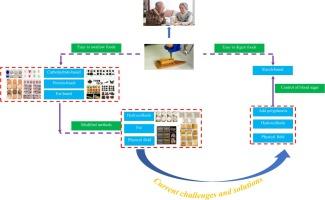Additive manufacturing technology in the development of easy to swallow and digest foods for the elderly
IF 7
1区 农林科学
Q1 FOOD SCIENCE & TECHNOLOGY
引用次数: 0
Abstract
The ageing of the population is a major challenge for the world. The elderly face a number of functional deteriorations in the body during the ageing process. Among these, swallowing and digestion are the two biggest challenges that elderly individuals face. The individualized, customized, and digitized approach to food processing offered using additive manufacturing technology also referred to as 3D printing technology-makes it particularly well-suited to the production of foods that are easy to swallow and digest for the elderly. The application of 3D food printing technology for producing foods that are easy to swallow and digest for the elderly is examined in this article. Meanwhile, it is discussed using some texture-improving techniques for making foods that are easier for the elderly to swallow. Additionally, the challenges and solutions associated with 3D food printing in the manufacturing of foods for the elderly are explored. Overall, this review offers some insights from material classification for the use of 3D food printing technology in the production of foods that are easy to swallow and digestible food for the elderly.

添加剂制造技术在为老年人开发易于吞咽和消化的食品中的应用
人口老龄化是世界面临的一大挑战。在老龄化过程中,老年人面临着一系列身体功能衰退的问题。其中,吞咽和消化是老年人面临的两大挑战。增材制造技术(也称 3D 打印技术)提供的个性化、定制化和数字化的食品加工方法,使其特别适合生产易于老年人吞咽和消化的食品。本文探讨了三维食品打印技术在生产便于老年人吞咽和消化的食品方面的应用。同时,还讨论了如何利用一些质地改善技术来制作更易于老年人吞咽的食品。此外,还探讨了与 3D 食品打印技术在制造老年人食品方面相关的挑战和解决方案。总之,这篇综述从材料分类的角度为利用 3D 食品打印技术生产老年人易吞咽、易消化食品提供了一些启示。
本文章由计算机程序翻译,如有差异,请以英文原文为准。
求助全文
约1分钟内获得全文
求助全文
来源期刊

Food Research International
工程技术-食品科技
CiteScore
12.50
自引率
7.40%
发文量
1183
审稿时长
79 days
期刊介绍:
Food Research International serves as a rapid dissemination platform for significant and impactful research in food science, technology, engineering, and nutrition. The journal focuses on publishing novel, high-quality, and high-impact review papers, original research papers, and letters to the editors across various disciplines in the science and technology of food. Additionally, it follows a policy of publishing special issues on topical and emergent subjects in food research or related areas. Selected, peer-reviewed papers from scientific meetings, workshops, and conferences on the science, technology, and engineering of foods are also featured in special issues.
 求助内容:
求助内容: 应助结果提醒方式:
应助结果提醒方式:


